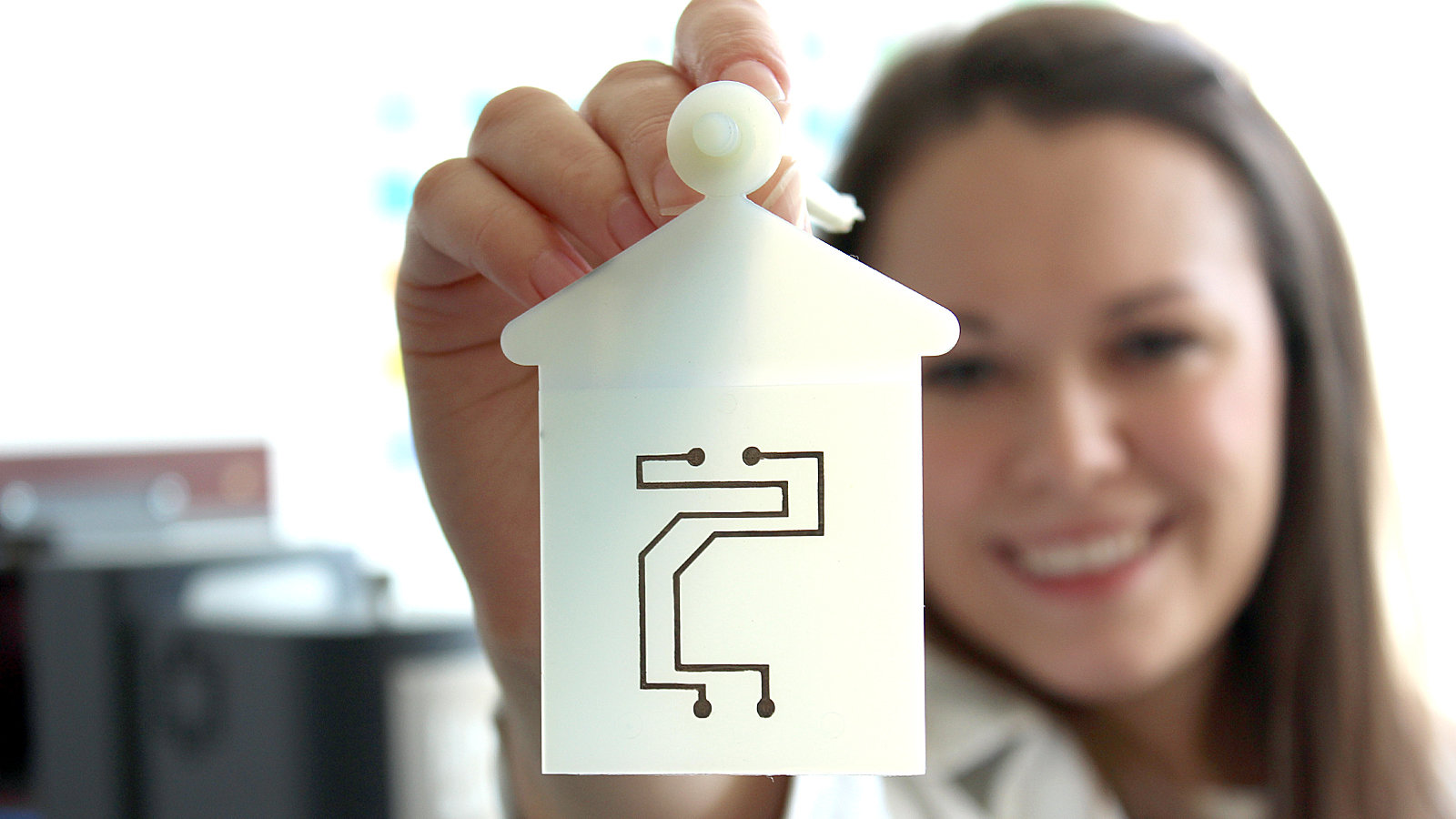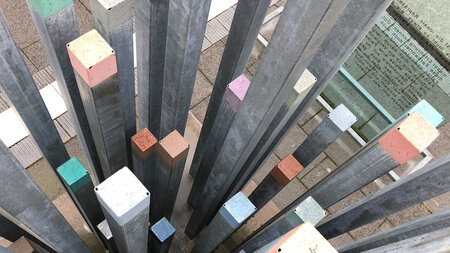3D-MID in one shot
Professorship of Conveying and Plastics Engineering researchers unite plastic with electronic components – prototypes at “embedded world” trade fair in Nuremberg
-

Functionalization of plastic components: Aneta Cmarová, Professorship of Conveying and Plastics Engineering at TU Chemnitz, presents an MID demonstrator that was created using injection molding. Photo: F.D. Nuwayhid
In 1965, Gordon Moore predicted that the amount of transistors on processor chips would be doubled every two years as they continued to be reduced in size. This rule of thumb has held true in the field of microelectronics for over 50 years and exemplifies the cross-sector trend towards miniaturization of technological components. Without the continual process of miniaturization, not only electronic components but also many other everyday commodities, such as motor vehicles, would be inconceivable in their current form.
A further step towards simultaneously effective and resource-efficient miniaturization is the fusion of electronic components with plastic elements. The Professorship of Conveying and Plastics Engineering at the Chemnitz University of Technology is currently conducting research on this topic. Until now, electronic components like circuit carriers and plastic components were manufactured separately and were joined at a later point in the assembly process. However, this is not only time-intensive but also runs counter to the miniaturization process necessary to create more effective components. As an alternative, MID elements (Molded Interconnect Devices) allow the subsequent addition of electronic circuit traces onto a previously manufactured plastic component. However, such manufacturing techniques have, until now, remained prohibitively expensive because MID production of this kind requires many time-intensive steps and is costly in terms of energy and chemical expenditure. Therefore, despite their enormous potential, MID elements are rarely in use today.
Injection molding directly onto the component surface
The approach used by the Chemnitz-based plastics engineers consists of applying the electronic circuitry directly onto the component during plastics manufacturing. For this, the principle of printed electronics is combined with the plastics engineering technology of injection molding. This technique is truly made unique by applying the conductor paths onto the mold surface of the injection machine, using printing technology, and transferring them by overmoulding in the injection moulding process.
The electrical circuitry is ready for use immediately following production of the plastic component – without the need to expend further energy or apply any other chemical processing. For these advancements, the Professorship of Conveying and Plastics Engineering has been able to fall back on previous developmental projects. For example, before the application of electrical circuitry came into question, researchers were focused on colored printing (or “decoration”) of elements. In the past, instead of conductive substances, decorative paints were used for this purpose. One idea behind the new techniques is, therefore, to achieve a higher degree of economic efficiency in production.
The new technique for the manufacture of MID elements will be presented from February 27 through March 1, 2018 at the “embedded world” trade fair in Nuremberg at the “Forschung für die Zukunft” booth (Hall 4, Booth 665). The researchers will also have initial demonstrator elements on hand, which will help to illustrate the principle of plastics with integrated circuitry.
Background: Utilizing miniaturization
Particularly in the field of automotive engineering, more and more functions such as safety or assistance systems continue to be incorporated. However, the amount of available assembly space in vehicles is limited. In order enable the implementation of more effective and newer features, the available space must be used more efficiently. Alongside miniaturization of technological elements, their functionalization plays an important role. In this process, functions which previously were fulfilled by multiple parts can now be performed by a single component. At best in miniature form.
More information is available from Prof. Dr. Michael Gehde, phone 0371 531 23130, e-mail kunststoffe@mb.tu-chemnitz.de
(Translation: Sarah Wilson)
Matthias Fejes
26.02.2018




